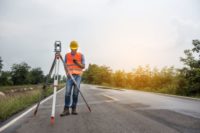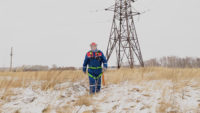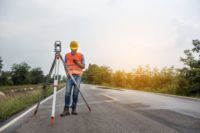In North America, we have amazing utility services. At any time, night or day, we can reliably access clean water, heat and electricity for our communities and places of work.
But who makes sure all of that water and electricity continues to flow so it’s there when we need it? Well, there are nearly a million people working at all hours of the day to make sure these resources are always available to ourselves and our families. They are also working in a variety of different, dangerous environments where certain occupational hazards pose a serious threat to their safety.
Due to the number of different environments utility workers perform their jobs in, the list of potential safety hazards is also diverse and therefore requires a more comprehensive approach to protecting their well-being. As you will read below, there are a number of measures that employers can take to protect their employees working in electrical and water utilities. More importantly, however, you will see how integral proactive thinking is for an effective safety program and how that program requires regular work and updates.
Safety hazard and risk assessment
Proactive planning begins with the first step of performing a safety hazard and risk assessment. A safety hazard assessment will help the employer identify and mitigate occupational threats before they hurt anyone or anything.
Hazard assessments need to be performed regularly so that you remain up-to-date on the current safety hazards your team members face. These assessments will document all occupational dangers, no matter what the work circumstances are, so that safety planning and mitigation strategizing can begin.
Safety legislation and regulations
One of the constantly evolving components of utility worker safety is safety legislation and regulations. OHS laws and industry standards change over time and with new safety challenges put in place to protect these people. By not complying with local legislation, the employer is putting their people in harm’s way as well as putting the company at risk of litigation and reputational damage.
To stay updated on local safety legislation and regulations, regularly visit industry-relevant sites on new legislation, regulations and standards, as well as the Law and Regulations page on the Occupational Safety and Health Administration's (OSHA) website.
Safety check-ins
Utility workers are often out in a number of different locations, making it a challenge to know if they are safe. By requiring utility employees to check in at the end of every shift, the employer can confirm their team members’ safety easily. Safety check-ins can be performed manually with planned phone calls or a whiteboard. Check-ins can also be implemented more effected using an automated system which notifies workers and managers of missed check-ins and emergencies.
Reliable communication system
When it comes to protecting utility workers, hydro or electric, a strong communication channel or system is absolutely essential for their well-being. One major benefit is the communication of important contextual details that can help a successful emergency response such as location, any safety hazards that day, as well as if they are working in confined spaces like tunnels and tanks or at tall heights like electrical poles. In an emergency response, the more information about the work environment and circumstances, the better.
Strategic planning
Another word mentioned in the same sentence as “proactive,” is usually also “planning,” which is required to protect utility employees from what lies down the road. Strategic preparation, such as emergency actions plans, for your workplace safety will prevent workers from vulnerable situations in the future, allowing you to implement protocols and measures to protect them from anticipated occupational hazards. Proactive planning will help prepare employees and employers for future emergencies as best as they can with their current knowledge, which includes past accidents and safety challenges.
Updated PPE
Electrical utility workers face the hazards of deadly shocks and burns, while water utility workers may perform their jobs around toxic chemicals, gases and biological hazards that can result in a range of illnesses and injuries. The quality of personal protective equipment (PPE) provided to them will have a major impact on their safety as well as their comfort when working. Research and provide the most ideal PPE for utility workers, making sure it complies with any safety legislation and regulations. With summer fast approaching, PPE can also include protective clothing, eyewear and headwear against the hot sun and long list of heat illnesses.
Regular maintenance of tools and equipment
A big cause of work injuries is an accident with equipment and other objects. The National Safety Council says that injuries “resulting from contact with objects and equipment” is the third-leading cause of work-related fatalities and is the fourth-leading cause of non-fatal injuries cause time off work; in 2021, more than 700 workers died and nearly 200,000 were injured. It is the employer’s responsibility to train their employees in the safe use of any equipment and tools as well as the regular maintenance of that equipment.
Regular maintenance and cleaning of work environments
Falls can be a safety hazard in any work environment but are much more dangerous in work areas that aren’t cleaned and organized regularly. Trips and falls at low levels over clutter and crossing cords can cause head and limb injury if not included as regular part of the worksite maintenance. In more complex cases, provide the proper, eye-catching signage that will notify employees of areas where they shouldn’t walk or work.
Journey management
Whether it’s in water or electricity, utility workers will often need to travel to various worksites, sometimes in remote locations. When travelling, workers may face several journey management hazards such as:
- Hazardous road conditions
- Driving fatigue
- Extreme weather
- Motor vehicle accidents
- Vehicular malfunction/damage
- Wildlife accidents
To keep mobile employees safe, provide them with an emergency kit and employ dependable location monitoring and satellite communication devices.
Reliable location monitoring
Journey management and these measures are obsolete if you don’t know the location of where to send help in an emergency. While the topic of location monitoring can be a contentious one, reliable location monitoring can save an employee’s life if they are injured badly and need immediate medical attention. As we just mentioned, consider satellite and GPS tracking devices to monitor remote utility workers – the peace of mind, alone, is worth it.
A proactive work environment is a safe one
By addressing any identified safety hazards now, you will be saving your team members and organization from any harm in the future. Assess and document any existing occupational hazards facing your team members now so that they can be mitigated before someone is hurt. Look at your workplace incident/accident history to determine how they can be prevented from ever occurring again. Any proactive work performed now, could save someone’s life the next time they go into work.




